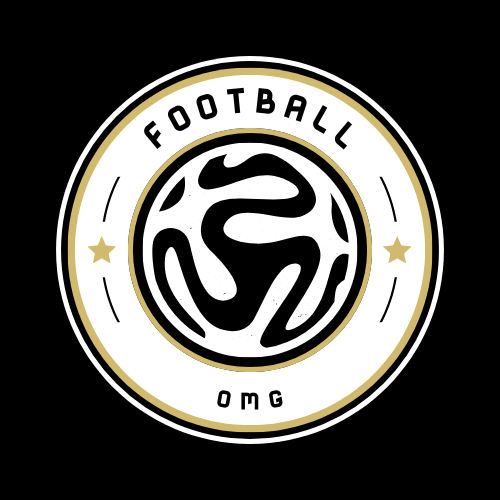In the high-stakes world of professional football, transfer strategies often define the trajectory of clubs and the careers of players. Today’s transfer market is not merely a game of financial muscle; it is a landscape in which ambition, vision, and strategic foresight intersect. Clubs like Manchester United, Liverpool, and AC Milan are making bold moves, signaling their intent to reshape their squads for future dominance. This evolution reflects a paradigm shift where clubs seek not just immediate gratification but long-term excellence through high-profile signings. The willingness to invest significant sums—such as Manchester United’s proximity to €85 million for Benjamin Sesko—indicates a belief that acquiring emerging talent now can translate into sustained success.
What makes these transfers compelling is their juxtaposition with tactical thinking. Clubs are actively scouring the global market, looking beyond domestic talent pools, and hunting for players who possess both potential and adaptability. The pursuit of players like Rasmus Højlund and Yunus Musah underscores this philosophy. Their signing is not just about adding depth but about integrating players who can evolve into cornerstones of their respective squads. In doing so, clubs are also sending a clear signal to their rivals: they mean business. Successful transfer strategies require more than money; they demand an understanding of player potential, team chemistry, and the capacity to nurture talent to meet both present needs and future ambitions.
Player-Centric Movements: The Shift Toward Personal Aspirations
While clubs view transfers as strategic investments, players are increasingly becoming active agents in their destinies. Harvey Elliott’s potential move from Liverpool exemplifies this shift. Once a promising youth product, the 22-year-old midfielder is reportedly seeking more consistent playing time—an acknowledgment that career growth is often intertwined with regular first-team appearances. This move signifies a broader trend, where players prioritize personal development and playing opportunities over loyalty or a club’s stature.
Similarly, Luka Yunus Musah’s consideration of Napoli as a destination reveals a desire to break free from the shadows of club pressure and find a role that aligns with his aspirations. For many young stars, a transfer is about more than money—it is about the chance to compete at the highest level, develop their skills, and leave their mark. The old notion of clubs unilaterally controlling player movement is increasingly giving way to negotiations centered on individual ambitions. In this new football landscape, player agency and personal growth often dictate transfer decisions, making negotiations more complex but also more authentic.
Emerging Trends: Strategic Flexibility and Market Volatility
The fluidity of the current transfer window is a testament to the volatility within the transfer market. Clubs like West Ham are actively monitoring players like Raheem Sterling, reflecting a flexible approach that responds to evolving circumstances. On the other hand, giants such as Chelsea are contemplating major sales, like Nicolas Jackson, indicating a willingness to recalibrate their squad composition rapidly. This dynamic environment demands adaptability and foresight—traits that successful clubs have embraced.
Another striking trend is the diversification of transfer targets across leagues and continents. Clubs are comfortable scouting talent from emerging markets and youth academies, such as Ajax’s acquisition of 16-year-old Eloi Gomez. These investments demonstrate a strategic pivot towards building for the future rather than solely focusing on immediate impact players. It’s an acknowledgment that the talent pipeline now extends globally, and the most innovative clubs are the ones that harness this global diversity to craft competitive advantages.
Furthermore, as clubs prepare for a future where financial fair play regulations tighten and the economic landscape shifts, strategic flexibility becomes essential. It is no longer just about signing marquee names; it is about smartly identifying undervalued assets and nurturing them into stars. The transfer market’s unpredictability calls for a keen eye and willingness to take risks—elements that define the most successful athletic organizations of our era.
Market Tactics: Navigating the Complex Web of Transfers
In this intricate web of negotiations, clubs employ various tactics to outmaneuver rivals and secure their targets. From complex multi-player swaps to high-value bids, every move is calculated. For example, Liverpool’s consideration of a €40 million bid for Giovanni Leoni highlights their contingency plans if they cannot finalize a deal for Marc Guehi. Meanwhile, clubs like Al Hilal are not shy about offering hefty sums, as seen in their ongoing negotiations for Darwin Nunez, emphasizing a strategic willingness to spend big for proven talent.
This cutthroat environment compels clubs to act swiftly yet thoughtfully. Often, high-profile transfers are coupled with strategic negotiations over personal terms, contractual clauses, and future sell-on rights. The interconnected nature of the transfer market means that success hinges on understanding both player motivation and financial logistics. Clubs that master these complexities gain not only talented players but also a competitive edge in shaping league dynamics.
The current transfer season exemplifies a broader truth: in modern football, success is dictated less by legacy and more by strategic agility, bold financial commitments, and the relentless pursuit of excellence. The teams willing to invest in potential, act swiftly, and navigate the murky waters of global negotiations will be those that define the future of the game.

